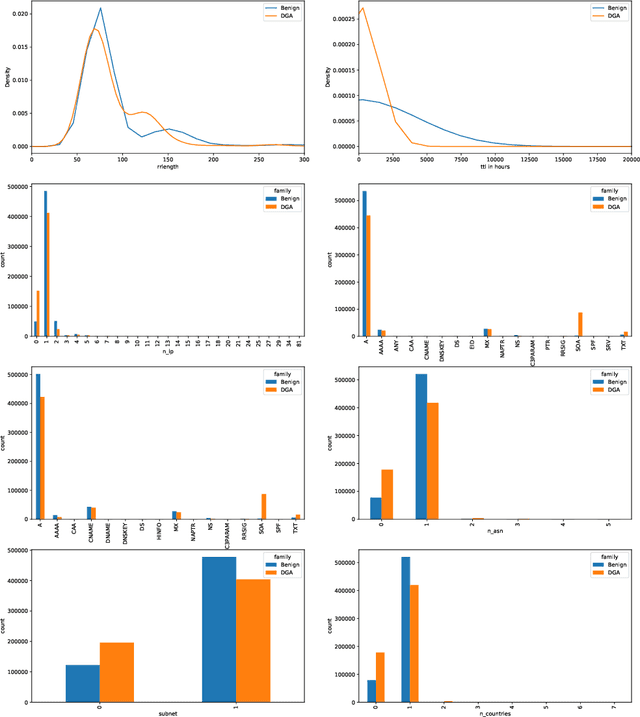Inline Detection of DGA Domains Using Side Information
Paper and Code
Mar 12, 2020



Malware applications typically use a command and control (C&C) server to manage bots to perform malicious activities. Domain Generation Algorithms (DGAs) are popular methods for generating pseudo-random domain names that can be used to establish a communication between an infected bot and the C&C server. In recent years, machine learning based systems have been widely used to detect DGAs. There are several well known state-of-the-art classifiers in the literature that can detect DGA domain names in real-time applications with high predictive performance. However, these DGA classifiers are highly vulnerable to adversarial attacks in which adversaries purposely craft domain names to evade DGA detection classifiers. In our work, we focus on hardening DGA classifiers against adversarial attacks. To this end, we train and evaluate state-of-the-art deep learning and random forest (RF) classifiers for DGA detection using side information that is harder for adversaries to manipulate than the domain name itself. Additionally, the side information features are selected such that they are easily obtainable in practice to perform inline DGA detection. The performance and robustness of these models is assessed by exposing them to one day of real-traffic data as well as domains generated by adversarial attack algorithms. We found that the DGA classifiers that rely on both the domain name and side information have high performance and are more robust against adversaries.
 Add to Chrome
Add to Chrome Add to Firefox
Add to Firefox Add to Edge
Add to Edge